Aloha-
Moon hoax conspiracy idiots are a spectacularly unoriginal bunch, which means the same easily discredited garbage gets regurgitated every so often and gullible idiots fall for it.
One such piece of garbage is the meme on the right.
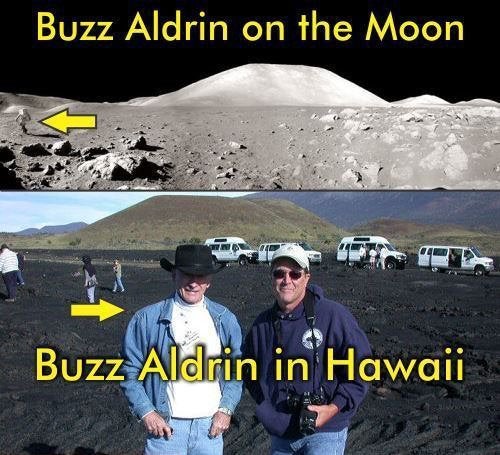
Let’s deal with one thing straight away. Neither of the two images are Buzz Aldrin. That’s how accurate and concerned about facts these idiots are.
The bottom image is of John Young, who orbited the moon in Apollo 10 and walked on the surface in Apollo 16.
We know it’s John Young because we can trace the source to this page. It details his attendance at this conference.
On the left is the original photo. Just in case there’s any doubt about identity can just about make out his name on his badge. It’s even clearer in another image -
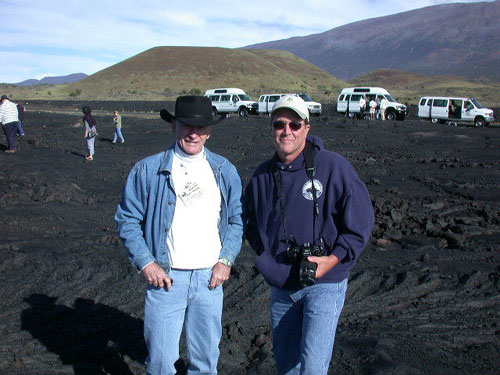

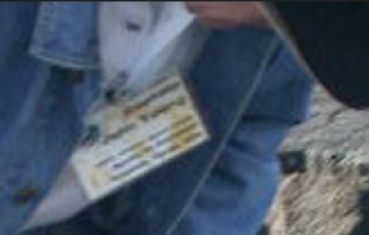
So where is the image taken? The conference itinerary lists the activities from a field trip on 19/11/03:
HAWAII SPACE TOURS – “From Hawai‘i to the Moon”
06:55 – Leave Marriott Outrigger Waikoloa
08:00 – Arrive Mauna Kea State Park / lava fields
08:15 – 25-
We have a location, but that lava field is big, can we be more specific?
Yes. To cut a long story short, it was taken here:
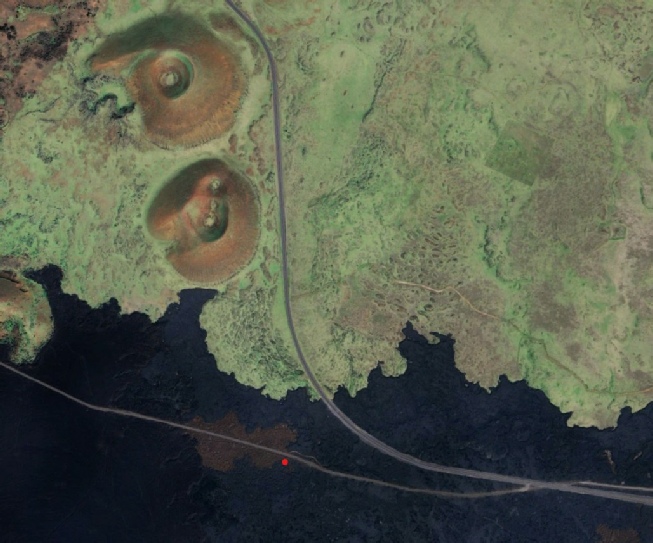
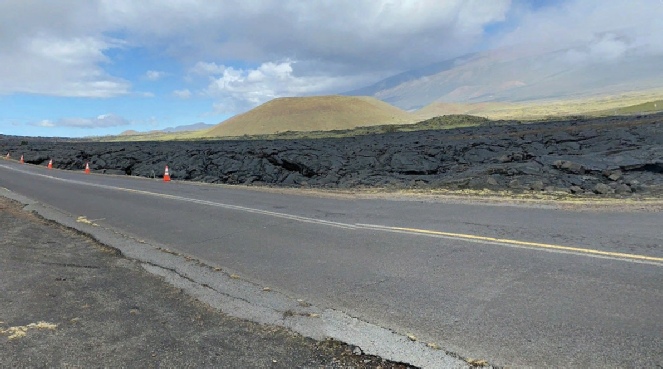
It’s the Pu'u Huluhulu hiking area, at roughly 19.689906° North, -
So far so good. What bout the other image? It’s actually a composite of several images taken during Apollo 17, and that’s actually important. Here’s the panorama, which is made from photographs AS17-

It shows Harrison Schmitt (the other astronaut attendee at the conference. The view is of the south massif of Taurus-
The view behind John Young, conversely, covers a mere 2.5 to 3 km, of hills 1.5km away. I say “hills”, because while the feature on the moon is one large hill, the large hill behind Young is actually two, as you can see on the right.
The south Massif rises over 2000m about the valley floor, whereas the cinder cones in Hawaii manage only around 50 metres. They are, in short, mountains compared with molehills.
Something else that appears in the Hawaii photograph that doesn’t appear in the Apollo images: vegetation. You can see bushes and small trees in the image on the right, and in the one below. There’s even grass on the slopes.


Do feel free, hoaxter idiots, to point out where the trees and grass are in the Apollo photographs.
What you do get in the Apollo photographs are details on the South Massif that you can see in any number of orbital images taken after Apollo, but not before. These details aren’t on the cinder cones. The image below left shows China’s Chang’e-


I’ve adjusted the contrast to make the details stand out more. Sue me. Here’s the best pre-

Where’s the detail? Short answer: it’s not there. There are no pre-
So no, the photo of John Young is not of some sort of mock up of the Apollo 17 landing site. It isn’t anything like big enough, has too much vegetation, and is also very very public -
In a similar vein, there’s a video doing the rounds on Instagram and TikTok making similar allegations, and turning into the inevitable meme. Here’s the claim as reported in the Instagram post:
“A viral conspiracy claim has re-
He posted a short clip online detailing the location and claimed it matched set designs used in the Apollo program’s televised broadcasts. Within days, his social media accounts were deleted, and friends reported him missing. Authorities have not confirmed any foul play, but the incident has fueled speculation among conspiracy theorists who have long questioned the authenticity of the moon landing.”
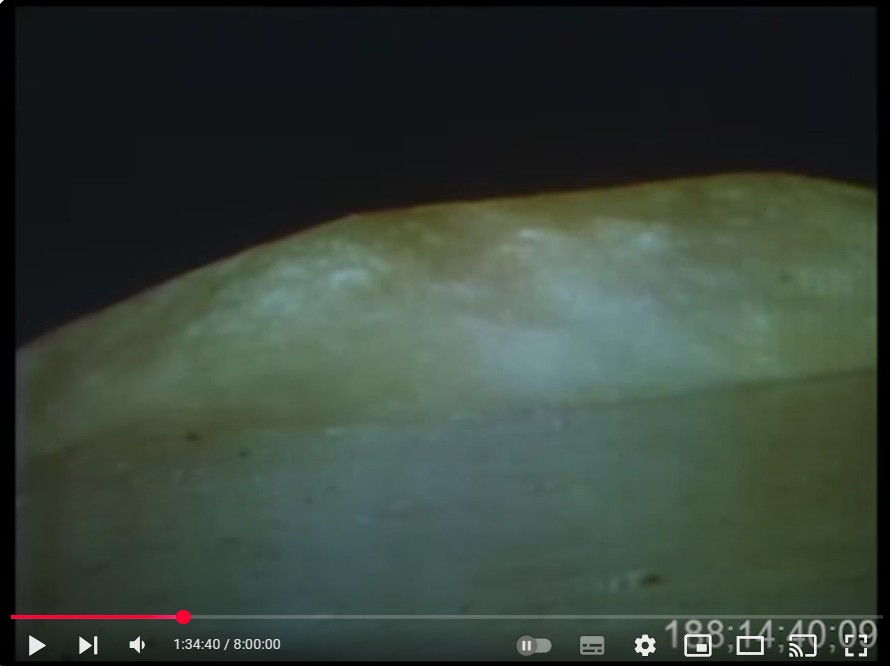
Even the live TV footage (like this taken after the LM returned to orbit) shows the detail visible in the photographs and Chinese probe imagery.
Here’s one variation of the memes, clearly implying that were looking at Hadley Rille, the site of Apollo 15’s landing.
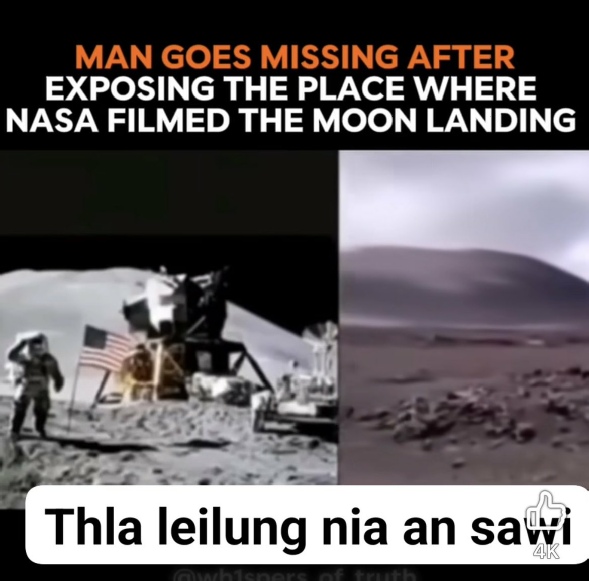
We can see what the entire mountain in the video looks like by taking stills from it.
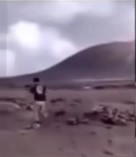
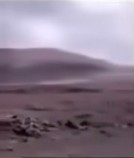
Looks very volcanic again, and highly likely to be Hawaii. Let’s take a leaf out of the conspiracy playbook, seeing as it’s OK to say that if it looks like something then that’s what it is.
My belief is that this is from an area near Mauna Kea called Lake Waiau -

While there are many cinder cones that could fit the bill, this one has many features that coincide with the view in the meme, like the one seen in this one, from here.
I am, as always, happy to be proven wrong. Feel free to find an alternative location.
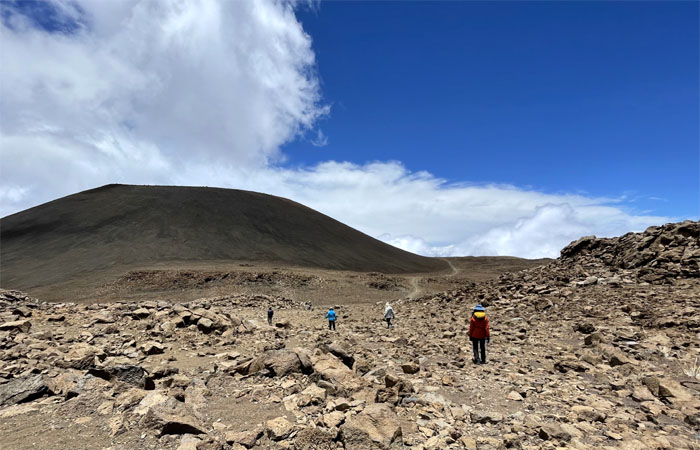
Many of the areas where these cinder cones can be found are criss-
This site has the same issues as the Apollo 17 claim: the area concerned is just too small to be the same location as the Apollo 15 site, and does not show the level of detail seen in the Apollo photographs.
A new variation on the theme appears with this claim:
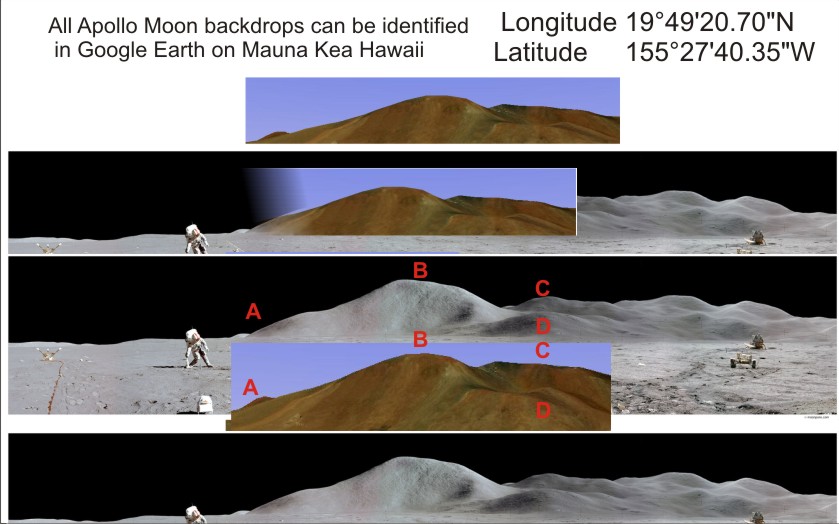
The grid reference is just Mauna Kea, again, but apart from superficial similarity the two really aren’t identical -

Oh. Even the superficial similarity evaporates into the insubstantial -
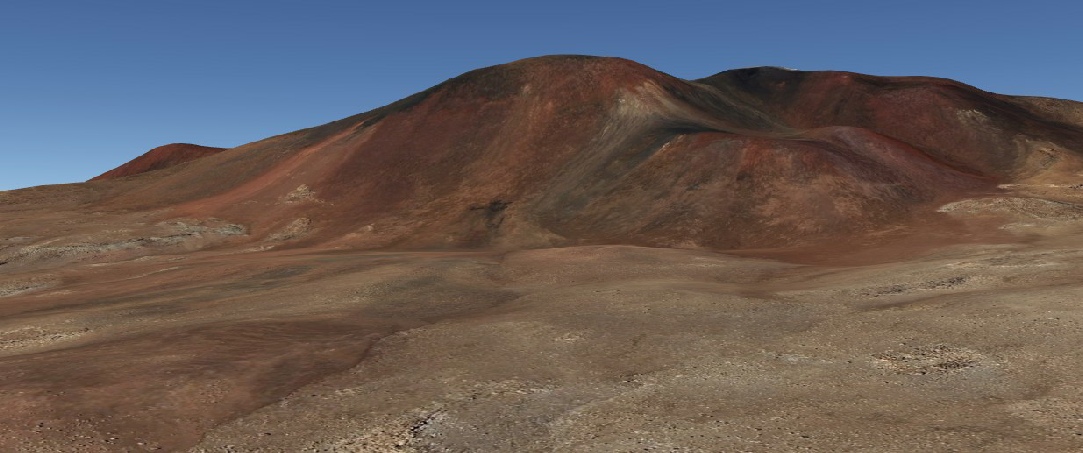
No such plain. Just the uneven slopes of the volcano’s foothills, slopes discoloured by mineral deposits and dotted with vegetation -
It’s a dishonest claim made using a dishonest meme. Again.